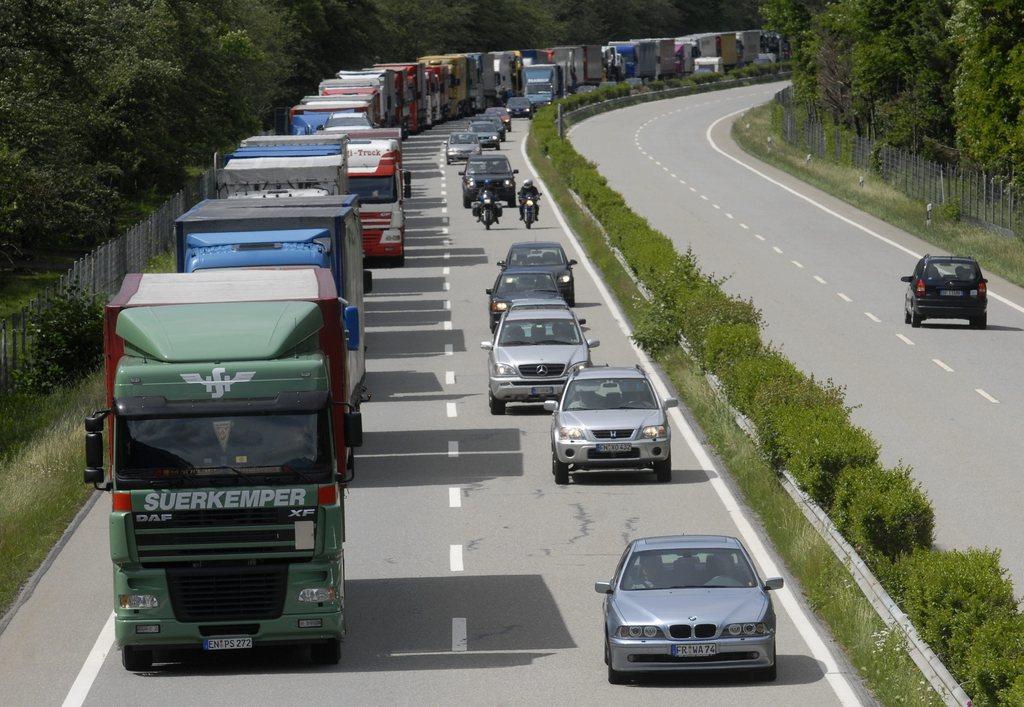
Traffic jams cost Swiss more than just time

Various costs related to traffic jams totalled CHF1.9 billion ($1.9 billion) in 2015, up 7% from 2010, according to the Swiss Office for Spatial Development.
In a statementExternal link released on Wednesday (link in French, German and Italian), the office said that costs stemming from wasted time accounted for 70% of the losses, having increased by 14% since 2010. However, other costs related to the climate (+12%) and the environment (+3%) also increased between 2010 and 2015.
Energy costs went down slightly in the same period, dropping by 6%, while costs relating to accidents also decreased by 8%. However, the office noted, the accidents category still accounted for almost a quarter of all costs, clocking in at CHF450 million.
Slow down to speed up?
Calculating costs incurred due to congestion can aid in infrastructure development and the formulation of measures to reduce peak flows, the office said. In the short term, solutions could include more flexible working and teaching hours, as well as teleworking and videoconferencing. In the longer term, the problem of traffic jams could also be tackled using financial incentives such as mobility pricing.
According to the Transport and Environment Association (ATE), another effective way to reduce traffic jams is to regulate driving speeds.
In parallel with the Office for Spatial Development report, the ATE released a statementExternal link on Wednesday (in German, French and Italian) describing a Federal Roads Office study that showed a reduction in traffic jams following the launch of a “speed harmonisation“ system.
By conducting a test on a Swiss auto route, the Federal Roads Office found that after reducing driving speeds to 100 and 80 kilometers per hour (62-49 miles per hour), traffic flowed more easily and journey times were “globally reduced”.
The harmonisation method depends on the traffic situation, the association explained: in dense traffic, speed limits are reduced, which increases the capacity of the road in question as well as safety for those on the road.

In compliance with the JTI standards
More: SWI swissinfo.ch certified by the Journalism Trust Initiative































You can find an overview of ongoing debates with our journalists here . Please join us!
If you want to start a conversation about a topic raised in this article or want to report factual errors, email us at english@swissinfo.ch.